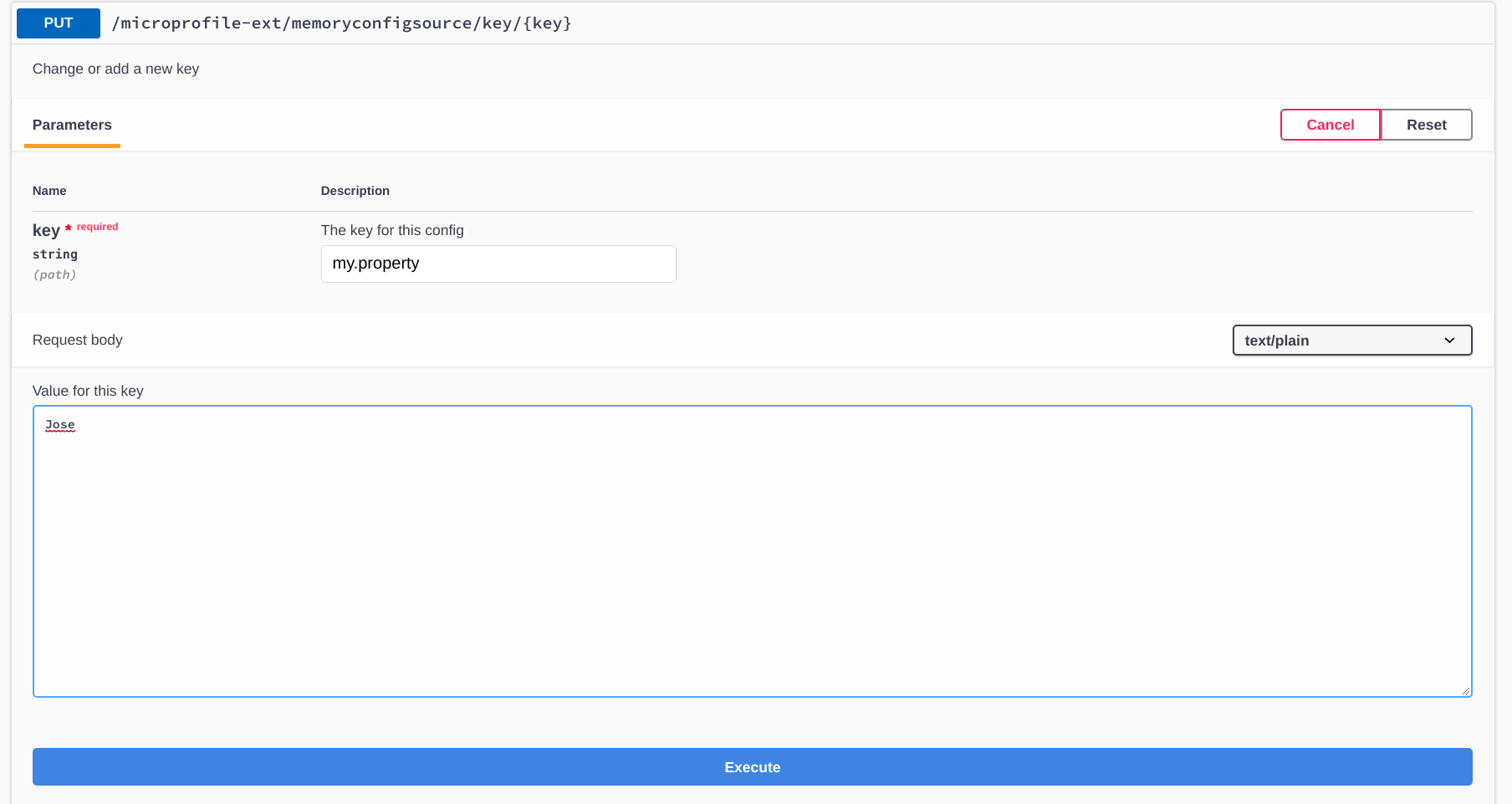Update Custom Properties in Quarkus at Runtime
Recently, I wanted to update some custom properties in order to dynamically change some inner behaviours in my application. As an example, let’s see a simple example:
@Path("/request-api")
public class GreetingResource {
@ConfigProperty(name = "my.property")
String property;
@GET
@Produces(MediaType.TEXT_PLAIN)
public String hello() {
return "Hello " + property;
}
}
At service start-up time, the Quarkus application reads the my.property value from the application.properties:
my.property=Default
And then the CDI framework in Quarkus (Arc) injects the value into my GreetingResource endpoint. So, by default, my service will return Hello default the first time we call the endpoint.
What about if I want to update this property my.property at runtime? I mean without needing to restart my application, I want to change the default value from default to Jose.
Let’s see first what we need to do to watch config changes and then how to change configuration dynamically.
Watch Configuration Changes
We can do this either using the @RequestScope annotation or watching config change events.
Using @RequestScope annotation
By default, all the beans have application scope. This means that the CDI framework will instantiate our beans only once per application life. So, we need to mark our beans to request scope, so the CDI updates it accordingly everytime the endpoint is invoked:
@RequestScoped // important!
@Path("/request-api")
public class GreetingResource {
@ConfigProperty(name = "my.property")
String property;
@GET
@Produces(MediaType.TEXT_PLAIN)
public String hello() {
return "Hello " + property;
}
}
With our resource marked with the @RequestScoped annotation, the CDI framework will evaluate the property my.property everytime our GreetingResource bean is called and inject its most recent value.
Watching config change events
If we can’t mark our beans as request scoped. Another option is to watch for config change events:
@Path("/request-api")
public class GreetingResource {
private static final String PROPERTY = "my.property";
@ConfigProperty(name = PROPERTY)
String property;
@GET
@Produces(MediaType.TEXT_PLAIN)
public String hello() {
return "Hello " + property;
}
public void all(@Observes ChangeEvent changeEvent) {
if (PROPERTY.equals(changeEvent.getKey()) && Type.UPDATE == changeEvent.getType()) {
property = changeEvent.getNewValue();
}
}
}
Update Configuration at Runtime
Quarkus uses the microprofile-config module that allows to use different config sources by providing a custom ConfigSource implementation. The purpose of this interface is to cope with use cases where users work with different sources like injecting properties from GitHub, or NFS or any other source.
For this post, what we would need is to have an in-memory source and have some exposed REST endpoints to read/update properties. Fortunately, this is exactly what It’s implemented in the microprofile-extensions/config-ext/configsource-memory microprofile extension. So, this would just be a matter of configuring this extension in our Quarkus application.
Use “configsource-memory” microprofile extension
First, let’s add this extension into the pom.xml file:
<dependency>
<groupId>org.microprofile-ext.config-ext</groupId>
<artifactId>configsource-memory</artifactId>
<version>1.0.11</version>
</dependency>
Also, we need to configure the CDI to use this ConfigSource implementation. For doing so, we need to add the file org.eclipse.microprofile.config.spi.ConfigSource into src/main/resources/META-INF/services with the content:
org.microprofileext.config.source.memory.MemoryConfigSource
Secondly, if we are not using it yet, we need to use a REST quarkus extension. In this post, we’re going to use resteasy. Let’s update the pom.xml file again by adding it:
<dependency>
<groupId>io.quarkus</groupId>
<artifactId>quarkus-resteasy-jackson</artifactId>
</dependency>
Note that we could use simply quarkus-resteasy (without JSON support) or use quarkus-resteasy-jsonb. |
To simplify things, we can also add swagger in order to update the configuration via UI:
<dependency>
<groupId>io.quarkus</groupId>
<artifactId>quarkus-smallrye-openapi</artifactId>
</dependency>
And finally, we can start playing around the new endpoints!
mvn compile quarkus:dev
The first time we call our endpoint http://localhost:8081/request-api and we’ll get Hello Default.
Let’s update the property via Swagger. We need to browse to http://localhost:8081/q/swagger-ui and use the right endpoint as shown in:

And finally, if we hit again into our endpoint, we’ll get Hello Jose!
Conclusions
We’ve seen how to dynamically update custom properties at runtime using either @RequestScope or obversing events. In order to update the configuration at runtime, we have made use of an existing Microprofile extension.
I also tried to use Consul Quarkus extension to dynamically update configuration at runtime. Unfortunately, Quarkus is not watching for changes in Consul, so if we change the property in Consul, Quarkus will never get notified. Also, it seems this won’t be supported: issues/10287.
What about Quarkus properties? To sum up, we can’t dynamically update Quarkus properties at runtime. This is because Quarkus is fully focused on cloud-native application and does a lot of stuff to boost the application performance. Therefore, this feature is not supported.
Source Code: Sgitario/quarkus-examples/quarkus-custom-config-source
